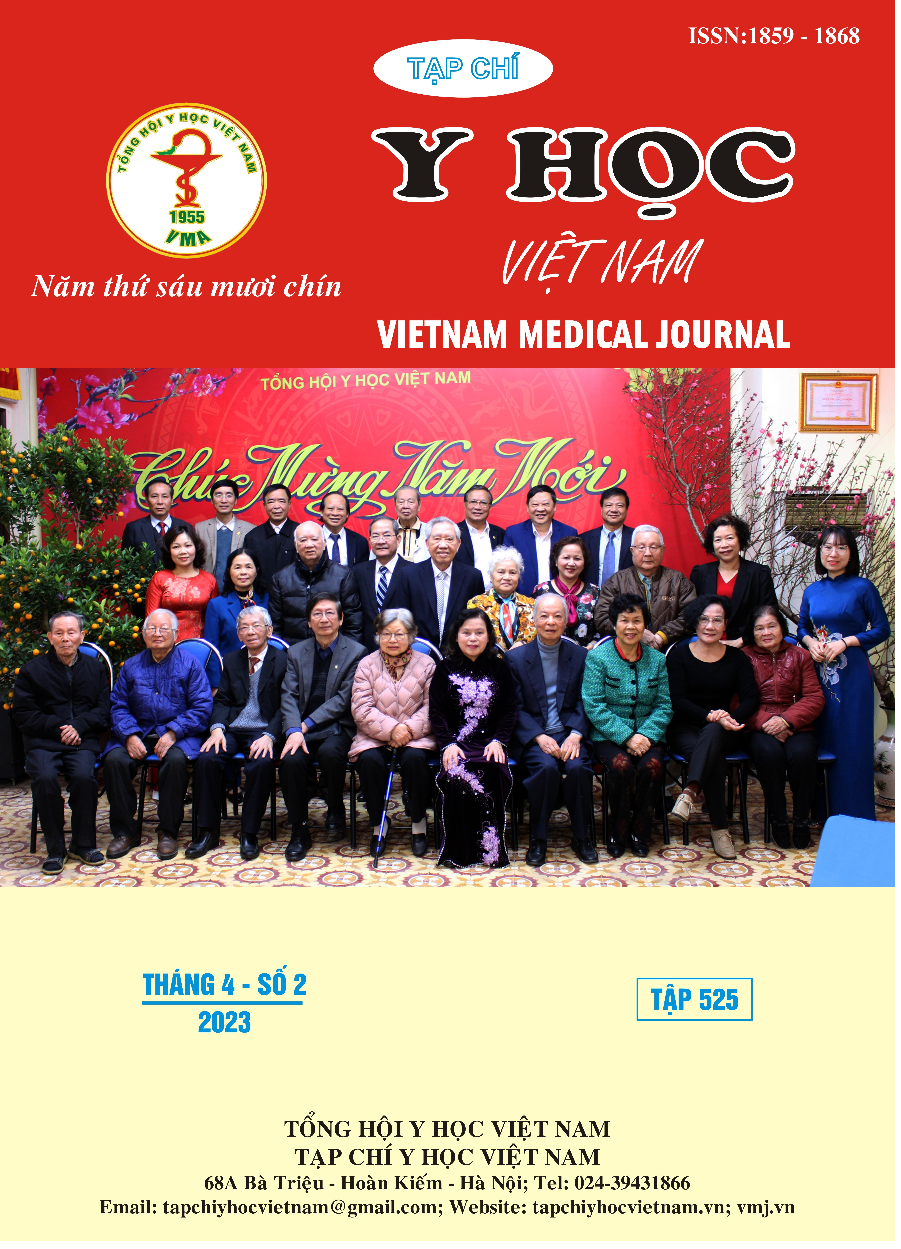ĐÁNH GIÁ KHẢ NĂNG PHÂN LẬP, TĂNG SINH VÀ DI CƯ CỦA NGUYÊN BÀO SỢI CÓ NGUỒN GỐC TỪ BỆNH NHÂN VẾT THƯƠNG MẠN TÍNH
Nội dung chính của bài viết
Tóm tắt
Mục tiêu: Đánh giá hình thái, khả năng phân lập, tăng sinh và di cư của NBS nuôi cấy có nguồn gốc từ bệnh nhân vết thương mạn tính (VTMT). Đối tượng và phương pháp: Nghiên cứu tiến cứu trên 60 mẫu da từ 3 vị trí khác nhau của 20 bệnh nhân có VTMT do loét tỳ đè và loét đái tháo đường (ĐTĐ). Các mẫu da được nuôi cấy theo quy trình của Freshney RI 2003 để đánh giá thời gian mọc NBS, thời gian phân lập qua các thế hệ, tốc độ tăng sinh và di cư giữa các vị trí khác nhau của hai nhóm và so sánh với NBS da khỏe mạnh. Kết quả: Các mẫu da tại các vị trí khác nhau đều mọc NBS, tuy nhiên vị trí nền vết thương (vị trí 1) có hiện tượng già hóa, không giữ được hình thái và chết nổi trên bề mặt đĩa nuôi cấy, không thể phân lập đến thế hệ P4. NBS ở vị trí mép vết thương (vị trí 2) và da lành cạnh vết thương (vị trí 3) có thể phân lập đến thế hệ P3, P4, P5 và không bị thay đổi hình thái. Các NBS từ VTMT ở vị trí 2, 3 có tốc độ tăng sinh, di cư liền vết thương thực nghiệm chậm hơn khi so sánh với NBS da khỏe mạnh. Kết luận: VTMT do loét tỳ đè, loét ĐTĐ có thể phân lập được NBS ở vị trí mép vết thương và da lành cạnh vết thương mà không thay đổi hình thái khi nuôi cấy. Tuy nhiên tốc độ tăng sinh, di cư liền vết thương thực nghiệm của NBS vết thương mạn tính chậm hơn khi so sánh với NBS da khỏe mạnh.
Chi tiết bài viết
Từ khóa
Nguyên bào sợi, vết thương mạn tính
Tài liệu tham khảo
2. Mendez, M.V., et al., The proliferative capacity of neonatal skin fibroblasts is reduced after exposure to venous ulcer wound fluid: a potential mechanism for senescence in venous ulcers. Journal of vascular surgery, 1999. 30(4): p. 734-743.
3. Brem, H., et al., Primary cultured fibroblasts derived from patients with chronic wounds: a methodology to produce human cell lines and test putative growth factor therapy such as GMCSF. Journal of translational medicine, 2008. 6(1): p. 1-9.
4. Pansani, T.N., et al., Effects of low-level laser therapy on the proliferation and apoptosis of gingival fibroblasts treated with zoledronic acid. 2014. 43(8): p. 1030-1034.
5. Houreld, N., H.J.P. Abrahamse, and l. surgery, In vitro exposure of wounded diabetic fibroblast cells to a helium-neon laser at 5 and 16 J/cm2. 2007. 25(2): p. 78-84.
6. Loots, M.A., et al., Cultured fibroblasts from chronic diabetic wounds on the lower extremity (non-insulin-dependent diabetes mellitus) show disturbed proliferation. 1999. 291(2): p. 93-99.
7. Wall, I.B., et al., Fibroblast dysfunction is a key factor in the non-healing of chronic venous leg ulcers. 2008. 128(10): p. 2526-2540.
8. Vande Berg, J.S., et al., Cultured pressure ulcer fibroblasts show replicative senescence with elevated production of plasmin, plasminogen activator inhibitor‐1, and transforming growth factor‐β1. Wound repair and regeneration, 2005. 13(1): p. 76-83.


